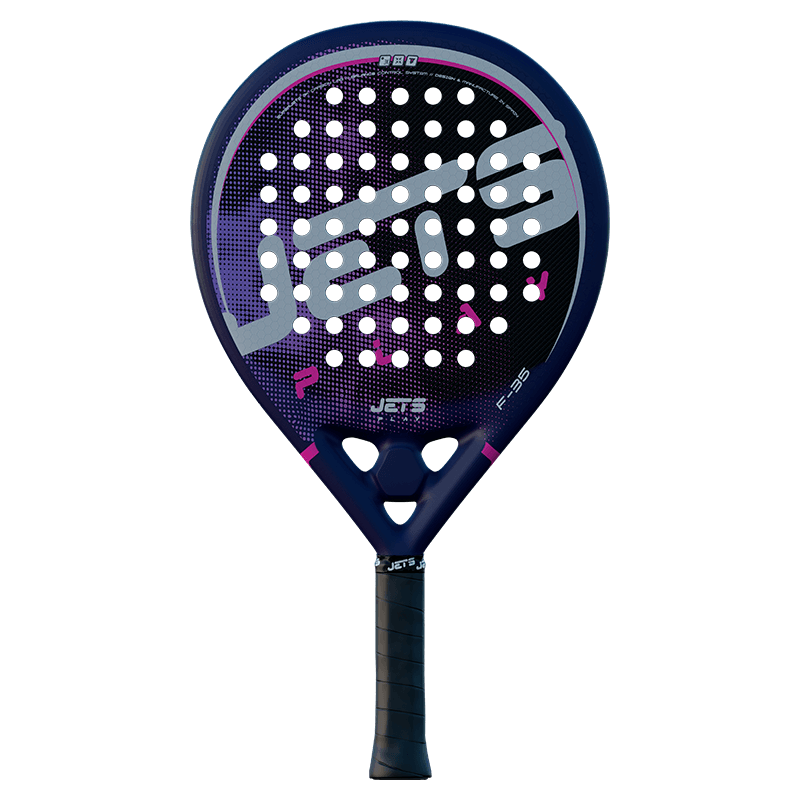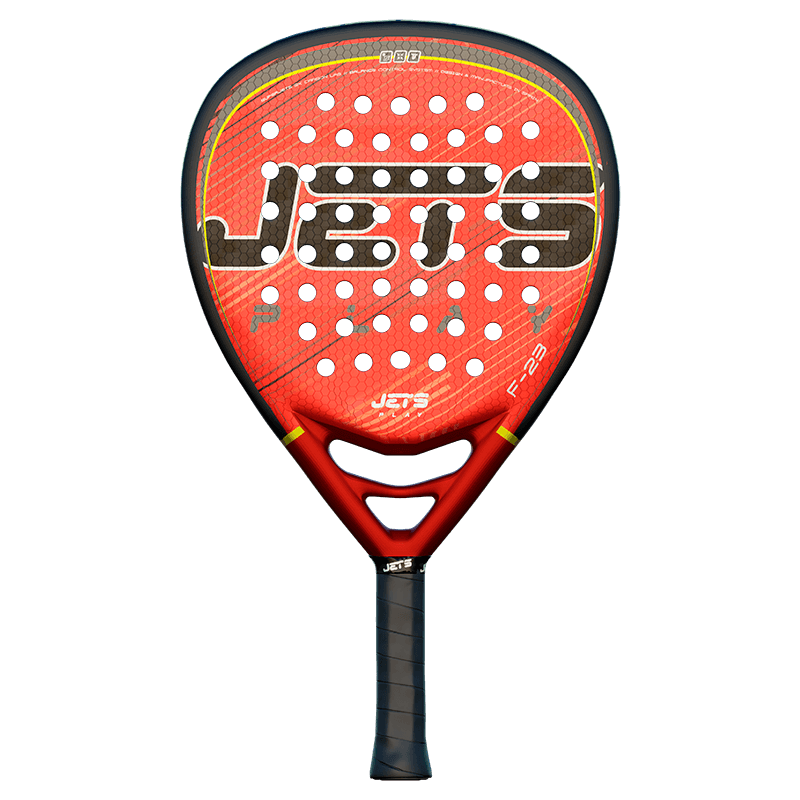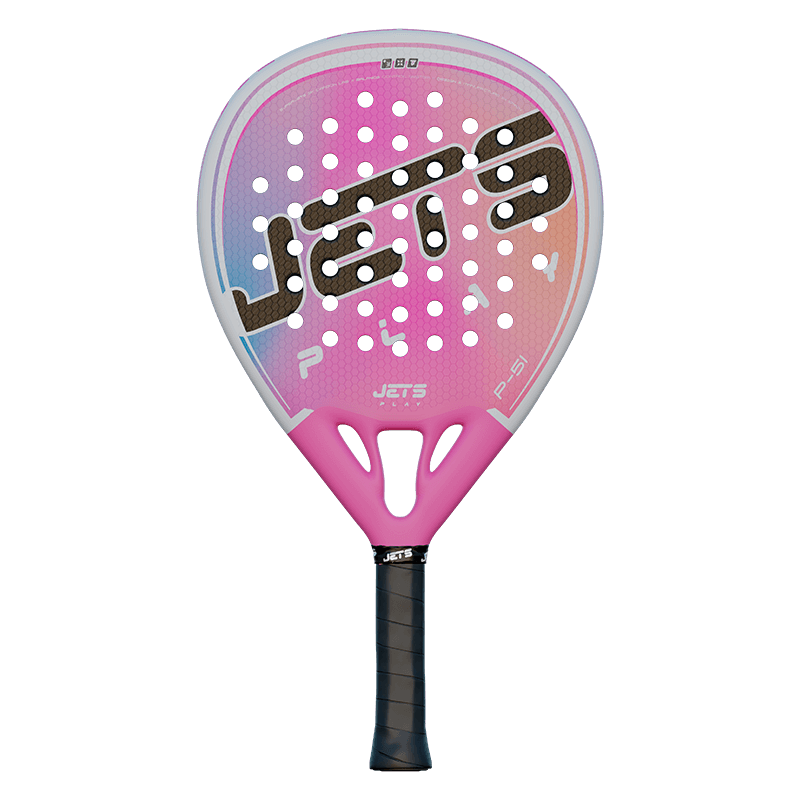Padel is probably one of the fastest growing sports in Spain in recent decades. Played in pairs, this competitive sport is easy to learn, and players tend to progress quickly. Furthermore, it is the kind of great social activity that attracts folks from all walks of life, becoming an integral part of their weekly leisure.
Considered a very complete sport, its physical, emotional and social benefits make padel an ideal sport for people of any age, sex or physical condition.
At Carbosport we have all the necessary equipment to practice padel: the best padel rackets, shoes and sportswear.
ROUND PADEL RACKETS
Round-shaped rackets are the most suitable for players who are new to padel and for players who play a strategic game and demand greater control and precision on the court.
The wide sweet spot of the round padel rackets makes it easier to return shots and offers greater precision in hitting. The weight distribution towards the grip means the racket is balanced very low. This makes round padel rackets much more manageable and makes it easier to reach your opponent's shots. In addition, they tend to be lighter, which reduces fatigue and lowers the chances of injury to the arm.
Round padel rackets are, in short, the safest and most comfortable of rackets.

Example of a round racket.
DIAMOND PADEL RACKETS
Diamond padel rackets are preferred by players who play a game based on offense and power. To play at an advanced level, good physical preparation is essential in order to avoid fatigue and possible injury.
Diamond padel rackets are balanced high: the sweet spot of the diamond racket is much smaller and is displaced towards the head of the racket. These two characteristics make it difficult for less experienced players to adapt to them.
Therefore, diamond padel rackets are most suitable for advanced level offensive players.

Example of a diamond racket.
TEARDROP PADEL RACKETS
Teardrop-shaped rackets are the most versatile rackets and the most suitable for most players. Their versatility is due to the way in which they perfectly combine control and power, adapting perfectly to intermediate or higher level players.
Their weight distribution balance is intermediate, lower than that of diamond padel rackets but higher than that of round rackets, providing greater manageability and balance. In addition, teardrop padel rackets have an intermediate sweet spot, which provides greater control without sacrificing too much hitting power.
Teardrop padel rackets are the most suitable rackets for players who prioritize power without sacrificing comfort.

Example of a teardrop racket.
Frequently Asked Questions about Padel
While both sports are played with a racket, there are notable differences between tennis rackets and padel rackets:
- Name: while in some languages they are called by different names, in English tennis is played with tennis rackets and padel with padel rackets.
- Size: padel rackets are much smaller than tennis rackets.
- Thickness: padel rackets are thicker than tennis rackets.
- Shape: padel rackets are much more compact and less stylized than tennis rackets.
- Impact surface: while padel rackets have a rigid impact surface, tennis rackets make use of a network of tightly stretched strings. In addition, the impact surface on tennis rackets is larger than on padel rackets.
- Materials: while some of the materials used to make tennis and padel rackets are the same, the manufacturing processes are different, as are a number of material components.
- Safety strap: padel rackets incorporate a safety strap at the end of the handle, which tennis rackets do not.
On our website you will find a wide variety of padel rackets, and you are sure to find the one that best suits your tastes and needs.
Although at first glance tennis and padel balls appear to be similar, there are certain characteristic differences that in the end make padel balls the better option when playing padel.
- Size: they are practically the same size, although by regulations standards, tennis balls are slightly bigger. In any case, the differences are minimal.
- Weight: this is also practically the same case. Here too, padel regulations allow for a minimal difference.
- Pressure: Here is where we discover the most notable difference: padel balls are at a significantly lower pressure.
- Bounce: here there is also little difference, although tennis regulations allow for a slightly bouncier ball than padel balls.
Are you looking for the best padel ball? Discover our selection of padel balls.
Although many players practice both sports, it is recommended they wear tennis trainers when playing on a tennis court and padel trainers when playing on a padel court, so as to better respond to the distinct characteristics of each surface.
Despite many similarities, there are certain differences between tennis and padel trainers, the sole being the differential element.
The design of the sole of some padel trainers is adapted to the playing surface, providing a stronger grip than tennis trainers. In addition, the sole is also adapted to the movements made on the padel court, which tend to be vertical moves and spins.
Despite these differences, both tennis and padel trainers aim to provide cushioning, support, ankle protection and comfort.
How to hold the padel racket is one of the main questions amateur players have. There is no single way to hold the racket, and, to a large extent, it depends on the type of grip you choose.
Choosing one grip or the other when making a shot affects the way we hit the ball, the way we put spin on it, the power and direction we give the ball... It can even affect the type of injury that can result from choosing the wrong grip.
As players reach higher and higher levels, they incorporate new and different types of grips. Nonetheless, they tend to all be based on three main types of grips, of which the continental grip is the most common.
- The continental grip (or hammer) is the most common and versatile. When you hold the padel racket using the continental grip, you hold it as if you were holding a hammer or saluting. This grip comes from tennis and can be used for any type of shot. It makes playing and reacting easier, because you don't need to change grips with each shot.
- The grip is on the right. This way of holding the racket allows you to execute powerful flat forehands, although it also allows for topspin. It is also used on backhand volleys, smashes and even to hit a lob.
- The Eastern backhand grip is the one typically used for the flat backhand shot, also allowing attack or finishing shots, the topspin shot and the X3 shot. It is also used to defend very low balls.
Carbon fiber is both lightweight and strong, making it an ideal material for padel rackets. It is the material that intermediate and advanced level players usually choose.
On the one hand, the integration of carbon fiber in the hitting area of the padel racket provides greater power when connecting with the ball. This benefits the offensive, attack style of play, and the players who practice this style see improvements in their results.
In addition, carbon fiber in the frame of the racket results in a much more precise game and avoids the annoying vibrations that occur when hitting the ball.
The resistant nature of carbon fiber means a longer useful life for the racket and avoids breakage due to blows and unintended impacts.
Finally, because carbon fiber is lightweight, this allows players to optimize on speed and movement around the court, greatly benefiting their game.
